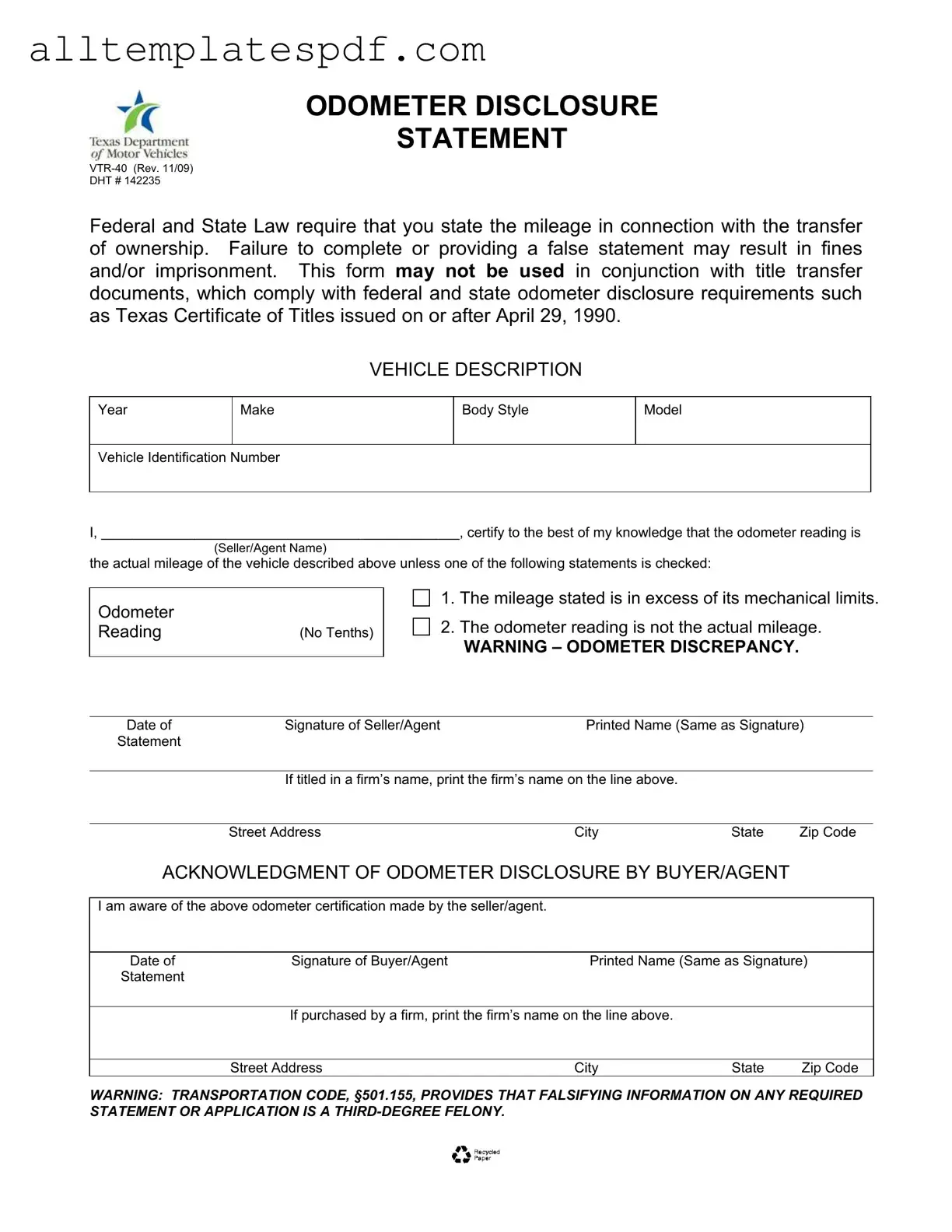When filling out the Texas Odometer Statement form, one common mistake is failing to provide accurate vehicle information. The form requires specific details such as the year, make, model, and Vehicle Identification Number (VIN). Omitting any of these details can lead to confusion and delays in the transfer process. Ensure that all information is complete and correct.
Another frequent error is not certifying the odometer reading properly. Sellers must state the odometer reading accurately and sign the certification. If the reading is incorrect or the certification is not signed, the form may be deemed invalid. Take the time to double-check the odometer reading before signing.
People often overlook the requirement to check one of the statements regarding odometer discrepancies. If the odometer reading is not the actual mileage or if it exceeds mechanical limits, it is crucial to mark the appropriate box. Failing to do so can lead to legal repercussions, including fines or imprisonment.
Additionally, some individuals neglect to provide their printed name as it appears on their signature. This is essential for clarity and verification. Without this information, it may be difficult to establish who completed the form, leading to potential issues down the line.
Another mistake is providing an incomplete or incorrect address. The form requires the seller's and buyer's addresses to be filled out completely. An incomplete address can create complications in communication and documentation. Always ensure that the address is accurate and fully detailed.
Finally, individuals sometimes forget the acknowledgment section by the buyer or agent. This section confirms that the buyer is aware of the odometer certification made by the seller. If this acknowledgment is missing, it can lead to disputes later on. Make sure both parties sign and date this section to avoid any misunderstandings.
